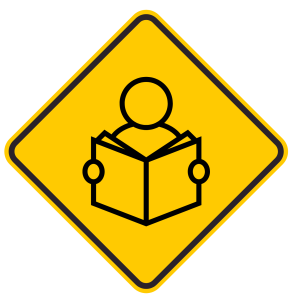| One can think of dyslexia as a continuum. Just as each person is a unique individual, so is the way characteristics of dyslexia affect each individual and the degree to which it impacts their life. Below is a list of some of the most common signs of dyslexia. |  |
- Being slow in learning to talk
- Not understanding what is said to them
- Having difficulty recognizing their name, letters, or words they’ve been taught
- Having problems following directions
- Showing difficulty (or avoiding) remembering words, learning words, pronouncing words, or expressing themselves verbally in a succinct manner (or at all)
- Showing little desire (or avoiding) learning to read and write; may prefer listening stories read to them
- Having blood relatives who also experience(d) difficulty acquiring language skills
- Reversing, transposing, or inverting letters, words, syllables, numbers, or symbols (in speech, writing, spelling, math), for example:
- “ton” instead of “not”
- “dropgum” instead of “gumdrop”
- “bog” or “pog” instead of “dog”
- “325” instead of “523”
- “3×5” instead of “3+5”
- Having an unreliable sense of direction
- Writing illegibly or with malformed letters
- Leaving out short words, e.g. articles or propositions that give meaning to words
- Reading very slowly or with little to no comprehension
- Having difficulty with syntax and sequencing words
- Miscalling words, for example:
- using the word “thing” instead of “night”
- using the word “achieve” instead of “archives”
- Academic progress does not line up with level of intelligence or effort; continuing to drop further below grade level
- Developing negative emotional, behavior, or attitude problems do to poor academic performance
- Exhibiting low self-esteem and self-confidence